 Your new post is loading...
 Your new post is loading...
Digital news continues to evolve, pushed by a variety of innovations in recent years, from groundbreaking new technologies like virtual reality and automated reporting to experiments on social platforms that have altered campaign coverage. As journalists and media practitioners gather for the annual Online News Association Conference, here are 10 key findings from recent Pew Research Center surveys and analyses that show how these rapid digital shifts are reshaping Americans’ news habits...
...The survey identified the social media sites with the most consumer awareness, as well as the appeal of those sites. Following are the sites with the highest awareness, the percentage of people who found each appealing as well as the estimated number of users.
When asked to rate the trustworthiness of media brands, on average consumers found traditional media brands (broadcast, cable and print) more than twice as trustworthy as social media brand....
OMG BuzzFeed has gone Fortune and its Original Trust Content one better. Instead of cranking out BuzzFeed-like content for corporate-owned media, the publication will teach you how to draft stories like the pros. That’s right. You too can write scintillating headlines like “15 Reasons Taylor Swift Might Be a Cat” or “27 Better Ways to Eat Ramen.” It’s another form of journalists reaching into corporate pockets with the value proposition, “We can help with that burdensome chore called content development.”
“Twitter does its best work in the first five minutes after a disaster, and its worst in the twelve hours after that.” - @rolldiggity There is a quiet that descends in a newsroom when a big story breaks.... Twitter has often been touted as the “first with news”. From the miniscule to the massive. From Stephen Fry being stuck in a lift, to the Arab Spring rippling across North Africa, it is the instant source of a story, the first gurgle from a tap. The only way to find out what’s really happening, according to some. But I’m beginning to think that so-called truth is losing some of its polish. I follow about 700 people on Twitter. I actually “watch” about three times that amount. I have lists of people I don’t follow. In other words, I can see them, without having to follow them. News people, experts, specialists, comedians, doctors, police officers, bloggers and bohemians. I’ve been on Twitter for more than three years. I like to think I’ve found much of the gold within its mines. When the first tweets about the Boston marathon explosions popped up in my timeline, I went over to my newsroom colleagues. I told them what was happening. And the process began. And I watched Twitter....
... News is irrelevant. Out of the approximately 10,000 news stories you have read in the last 12 months, name one that – because you consumed it – allowed you to make a better decision about a serious matter affecting your life, your career or your business. The point is: the consumption of news is irrelevant to you. But people find it very difficult to recognise what's relevant. It's much easier to recognise what's new. The relevant versus the new is the fundamental battle of the current age. Media organisations want you to believe that news offers you some sort of a competitive advantage. Many fall for that. We get anxious when we're cut off from the flow of news. In reality, news consumption is a competitive disadvantage. The less news you consume, the bigger the advantage you have....
Given the speed of the news cycle and the time needed video news production, social media is "the first way we break news now," says Andrew Springer, Producer of Social Integration at ABC News, in this interview with Beet.TV at SXSW.
The grizzled vet and the digital native: Journalism has plenty of room for both to succeed. I spent eight years at AOL and I'll say this: I saw none of the great, all of the bad and some of the good. ... The blood sport during my AOL days was about the future of media companies — who would or wouldn’t survive the digital onslaught. Actually, it was much the same during my time at Newsweek in the 80s (who needed three newsweeklies in a broadcast world). Ditto when I joined The New York Times in the 70s (was the city big enough for both The Post and Daily News). Now, the social Web with its echo chamber turns up the volume daily — and makes it more personal, too. It’s far more about the fate of the individual journalist. That quickly gets down to the paycheck. Will there be one? How much? Who gets it — the “professional” or the pretender? Consumer demand for credible news and information is greater than ever. The problem is the 100-year-old model for producing it is forever broken. That’s why more attention must be paid to finding new ways to produce quality journalism — efficiently, at scale and at a price supported by mobile CPMs, which at best are 50% lower than desktop CPMs, which if you’re lucky come in two-thirds lower than print CPMs. In other words, a high-cost newsroom structure built for the print age will never work in a smartphone or tablet world. A few startups are experimenting with new models — Vox Media, Machinima, Bleacher Report and Storify are a few that I follow. Among traditional media companies, FORBES is the only one I know of charting a new course....
When it comes to getting general news and information, consumers worldwide put as much trust in search engines as they do in traditional media — and more in both than they do in social media. But, the numbers don’t portray any single source as highly trusted, which suggests that consumers are at least trying to vet the accuracy and trustworthiness of what they find in today’s information-saturated world. The data comes from the recently released 2013 Edelman Trust Barometer, the 13th annual global survey that uses data from “informed publics” — college-educated individuals in upper income brackets that follow public policy issues and are active media users....
...As more people in any given newsroom are publishing to social platforms — andas more people bypass the homepage and instead use Twitter and Facebook as the entry point to any given news site — analytics companies see new opportunities to help media companies leverage real-time social data. Visual Revenue, a predictive analytics firm that focuses exclusively on media companies, is this morning rolling out a bundle of tools to help editors measure the effectiveness of social publishing in real time. “So, if you push a story right now on Nieman Lab, 40 clicks into it you might see 17 retweets, two favorites, some manual retweets and that’s all great, actually,” Visual Revenue CEO Dennis Mortensen told me. “But how do you really add all of it up?”...
When a helicopter crashed in a densely populated part of London around 8am today, next to one of the busiest trainlines in Europe and a large bus station, the news was always going to be broken, within seconds, by members of the public on Twitter, armed with camera phones.
Twitter user Craig Jenner was one of the first to put a picture on Twitter which was shared far and wide.
What happened next is indicative of the way the media are increasingly playing catch-up on such stories, moving from reporting to aggregating (or curating, if you must) - images, eye-witness accounts and videos. Journalists were asking to use the picture with a credit and were trying to get Jenner on the phone...
|
The Forbes website, or "platform", as Lewis D'Vorkin, chief product officer for the media outlet, prefers to call it, publishes hundreds of articles a day, powered by not just its own journalists but a community of 1,300 contributors and a dozen brands producing "thought-leadership content".
Speaking at an event on Wednesday (30 October), held at the Telegraph, D'Vorkin discussed in detail the site's content strategy, which is based on the editorial pillars of "context, relevance and analysis".
Strikingly, it is seeing much success in resurfacing past content, with 50 per cent of its monthly traffic said to be to articles that are at least 30 days old.The "more quality content we produce, the more variety we produce, the more long-tail of content we have," he added.But the approach taken by Forbes demonstrates that it is not just a newsroom's own reporters who can achieve this....
Reports on traditional news outlets, such as print and broadcast struggling to be financially viable. are nothing new. In a previous blog post, I quoted a statistic from IBM that claimed 90 per cent of all data has been created in the last two years alone.
With the rise of social media and the ability for anyone with access to a computer to create a blog, the supply of possible news sources has exploded since the web gained mainstream acceptance years ago. The public’s demand for content and news has dramatically increased. However, the exponential growth in supply of news sources such as social media, 24-hour news channels, and everything in between, has created a glut of information effectively driving down the value of real news. This is essentially a supply-and-demand problem. Combined with disruptive technology and better methodologies for advertising, traditional media outlets have been forced to make changes to the ways in which they report and monetize news content....
When big news breaks, a common impulse is to turn to CNN, but the network suffers from self-inflicted damage. ...So what is the real damage of a midweek stumble in a very complicated story? When the story was breaking on Friday, CNN had its biggest nonelection rating in 10 years. People at CNN said that they got significant blowback from sources, but Mr. Zucker seemed fine with the overall effort, issuing a hero-gram to the staff on Friday, before the final chapter unfolded. “All of you, across every division of CNN Worldwide, have done exceptional work,” the memo read. “And when we made a mistake, we moved quickly to acknowledge it and correct it.” That’s one way to spin it. I talked to several competitors who did not commit the same error, and one spoke for many when he said: “It was bad enough — really, really bad — so that they made all of us look terrible. Nobody comes away a winner from something like this.” If legacy media were falling short, the new order did not look all that promising either. A crowd-sourced witch hunt took place on Reddit, identifying innocents as suspects, and Twitter was alive with both misinformation and outrage at the mistakes. (There were many curiously triumphal posts about the death of old media in Twitter feeds that were full of links to that same old media.)...
TV and social media coverage of Boston bombings was repetitive and speculative. The story will unfold in coming days.... The Steve Silva boston.com footage of the Boston marathon finish line explosion is the new World Trade Tower plane implosion is the new Zapruder tape. Another national horror leaves a scar. We know the drill: The moment of violent disruption, the sense of shock oddly mediated by the screen, replayed endlessly — now on every platform. The repeated images become mere images, first shocking then numbing. At some point, perhaps to distance ourselves from the pain, we focus on the conflicting reports of the smallest detail: how many seconds elapsed between the first explosion and the second? First we heard “a few.” Then a more definitive “13 seconds.” Then “between 10 and 20.” Every network had a different count. At some point we started counting ourselves, timing the moments with every replay. Could’ve been 13, but the speed of sound is faster than the speed of video, isn’t it? We were told that cell service was disrupted so as not to set off additional bombs. That report was then retracted. We heard the JFK Library had a third bomb. That report later knocked down. A suspect was held at Brigham and Women’s Hospital. Authorities later said not so. More unexploded bombs? Maybe, maybe not. Information moves faster than knowledge and still the finish-line explosion footage rolls....
...At their core, Facebook, Tumblr, and Twitter are sharing networks, not publishing companies. They act as platforms for other people’s content, which can be spread rapidly and massively among their communities. A consequence of being walled gardens that restricts this sharing activity within their own properties, however, is that they give up the right to decide when and how that content breaks free into the wider public discourse. Even though it had success with its partnerships program at placing stories into other forums, Storyboard’s stories always had the whiff of marketing, or what is these days being described as “native advertising.” As we now know, that ultimately did not work out for Tumblr. Going by Fletcher’s comments, perhaps Facebook Stories will meet a similar fate....
If the newspaper industry had theme music in 2013, it might use “Been down so long it looks like up to me,” the much-recycled line from a 1920s blues song. For the first time since the deep recession that began in 2007, newspaper organizations have grounds for a modicum of optimism... Companies have started to experiment in a big way with a variety of new revenue streams and major organizational changes. Some of the bright opportunities – such as offering social marketing services to local businesses – are ventures too new to be measured yet industry-wide. They show signs of stabilizing revenue.... Even halting improvement in the general economy helps the industry. The double whammy of cyclical ad losses on top of secular shift to new media has considerably eased from the worst of the recession from 2007 to 2010. Auto advertising has come back, and some markets, like Miami, are beginning to see recovery in real estate and employment ads as well. All those positives, however, are for the time being mostly promise rather than performance. The most basic indicators have not turned around. The industry is little more than half the size it once was. Considerable dangers persist... So the industry entered 2013 with some positive signs but still dealing with difficult economic realities. The two biggest newspaper developments of the last year – digital paywalls and reduced print frequency – capture that odd mix of expansion and contraction now typical within the industry....
One of the first things that crops up in conversation these days is the language of digital. The word content is over-used by marketers and publishers. The term does a disservice to the creative process behind it. I find it quite hard to think of stories as content – it’s so far removed from what it takes to do. In the digital age, journalism is still – just – clinging on by its fingernails and using the catch-all moniker of content is not helping its standing. Content covers all players, from finely honed pieces by professional journalists and commentators, to rants by amateurs. However, just because everyone now has access to a publishing platform online, doesn’t meant quality editorial is a dying art, nor does it mean that those producing quality editorial should ignore the changes happening in the publishing world. On a site like xoJane – to which I contributed to for a short stint – you’re trying to connect with people. You’re no longer handing down stone tablets for them to read. I think that’s a very important – and good – part of what’s happened to communication....
Tech site develops predictive platform to monetize traffic surges In an analytics-obsessed Web climate, everyone is chasing the big story. The problem is, more often than not, big breakout traffic scoops yield attention, eyeballs and notoriety, but very few dollars. Last month, Deadspin broke the story on the Manti Te’o girlfriend hoax, netting the site nearly 4 million pageviews. But as Gawker Media mentioned publicly following the story, the company had no technical solution in place to monetize an unforeseen surge in traffic. Gawker is not alone. Web publishers have struggled across the board with this, which is why Ars Technica has been hard at work with what could be a viable solution. At Ars Technica, Condé Nast’s 15-year-old high-brow tech site, Ken Fisher and his small in-house team were lamenting the traffic conundrum when they decided to build a real-time dashboard geared toward examining pageviews with a predictive eye toward recently posted articles that are poised to trend. "Within two days we found it was working really well," explained Ars editor in chief Fisher. “We were identifying within an hour stories that would go on to do 900,000 views. And these were not pieces you’d hear by title and think, ‘That’s going to be killer.’ One was titled, Quantum Networks May Be More Realistic Than We Thought.”...
"Internet Users Demand Less Interactivity," read the headline of a recent article at The Onion. A (fictional) Internet user commented: "Every time I type a web address into my browser, I don't need to be taken to a fully immersive, cross-platform, interactive viewing experience...I don't want to take a moment to provide my feedback, open a free account, become part of a growing online community, or see what related links are available at various content partners." Are magazine app users starting to feel the same way? Faced with floods of online content, readers open magazine apps for a cohesive, relaxed reading experience -- only to cope with massive file downloads and confusing, complex interfaces.
A new batch of magazine publishers wants to move in a different direction. Drawing on the concept of "subcompact publishing," recently articulated by Craig Mod, and often mentioning Marco Arment's The Magazine as inspiration, these publishers are creating minimalist magazine apps that do just enough -- and no more -- to provide a focused, deep, quality reading experience....
I’ll be the bearer of bad news: the press that most publicists chase for clients isn’t really worth anything. There’s a good chance no one will actually see it. Except the client, that is. The flack will make damn sure of that. But other than that, the assumptions of publicists, clients and journalists—that being featured matters, that being written about will drive awareness or sales or public image—are a collective chimera. The widespread belief is that the media has “reach.” Trust me, they don’t. Not anymore. It’s become almost pathetic. It hit me the other day when I snagged a profile for a client on a well-known website. The day it ran, they editor sent me an email: “Hey, we hate to ask but could you guys be sure to tweet and share the article for us?”... [This is a fascinating article and media irony ~ Jeff]
|



 Your new post is loading...
Your new post is loading...



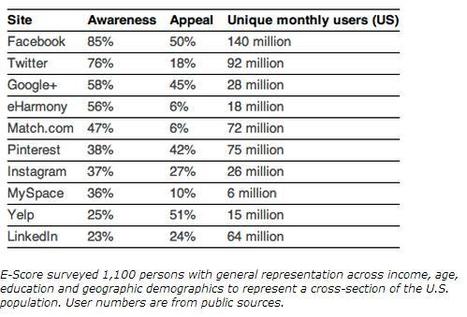
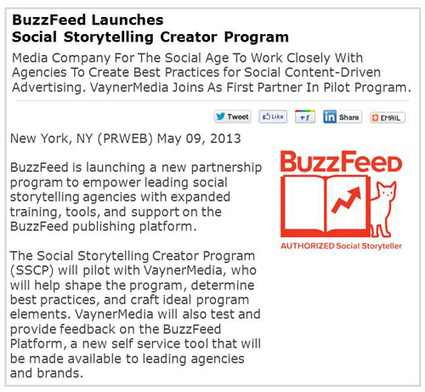



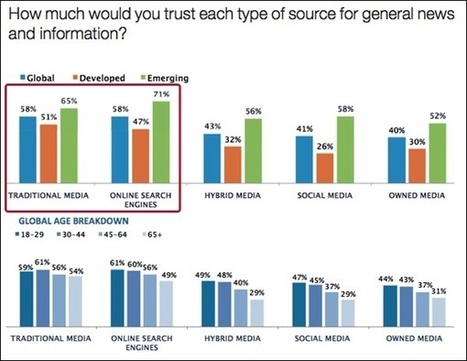




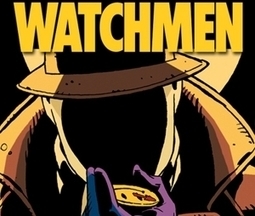



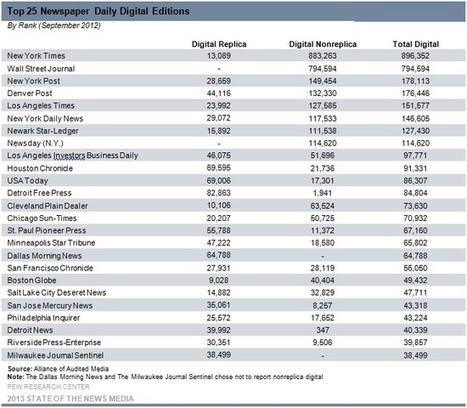



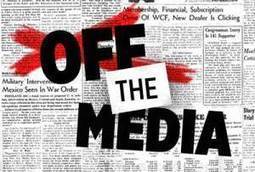





Pew Research provides valuable insight into the changing digital news landscape. rrecommended reading for PR, journalists and marketers. 9/10